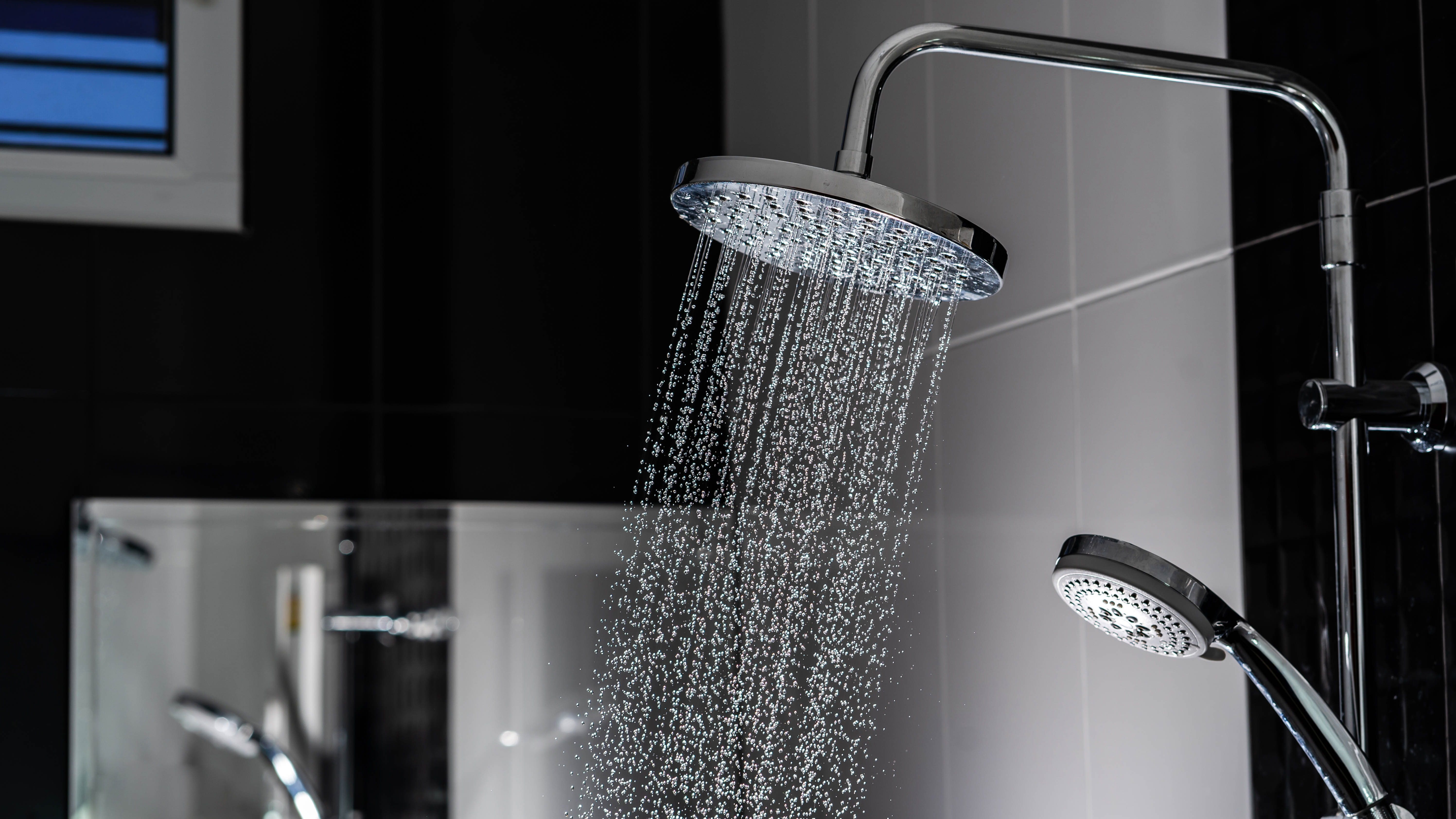Tom's Guide Verdict
The Xreal Air 2 Pro set the standard as the undisputed AR glasses champ — shrinking the dimensions and weight, while providing a gorgeous big screen picture quality and a reliable spatial software suite. This category no longer feels like one big beta test.
Pros
- +
Gorgeous display
- +
AR/Spatial software is actually reliable
- +
Really comfortable to wear
- +
Better value for money
Cons
- -
An expensive purchase
- -
Still a little large on the face
- -
Tinny audio
- -
Full AR features require an optional accessory
Why you can trust Tom's Guide
AR glasses are slowly but surely starting to become a thing, and the Xreal Air 2 is the first pair of specs that don’t feel like a beta test of the idea — and when combined with Xreal Beam Pro, the best smart glasses you can buy right now.
Why? Well every set I’ve tested so far has three key problems: unreliable software, rough display tech for anyone other than those with 20/20 vision, and a larger than life aesthetic that makes you look like a prat on public transport.
Xreal doesn’t completely fix all of these issues with the Air 2 (more on that later), but the company comes close enough to make these worthwhile.
XREAL Air 2: Price and availability

AR glasses are still a pricey niche to get into, but Xreal is bringing the total cost of entry down slightly. I say “total” because to make the most of what these glasses can do, you will have to pony up for an additional accessory.
The standard Xreal Air 2 glasses come in at $399, while the Air 2 Pros we tested cost $449. On top of that, you’ll need to grab an Xreal Beam, for many of the AR software features mentioned below, which will set you back $119.
That leads to a maximum total of $568. That is a competitive price when compared to the likes of dropping $549 on the Viture One glasses alone, before any of the accessories. But it is still steep — even when you chop the $50 off, opt out of the electrochromic lenses, and snag the standard Air 2s.
XREAL Air 2: Design
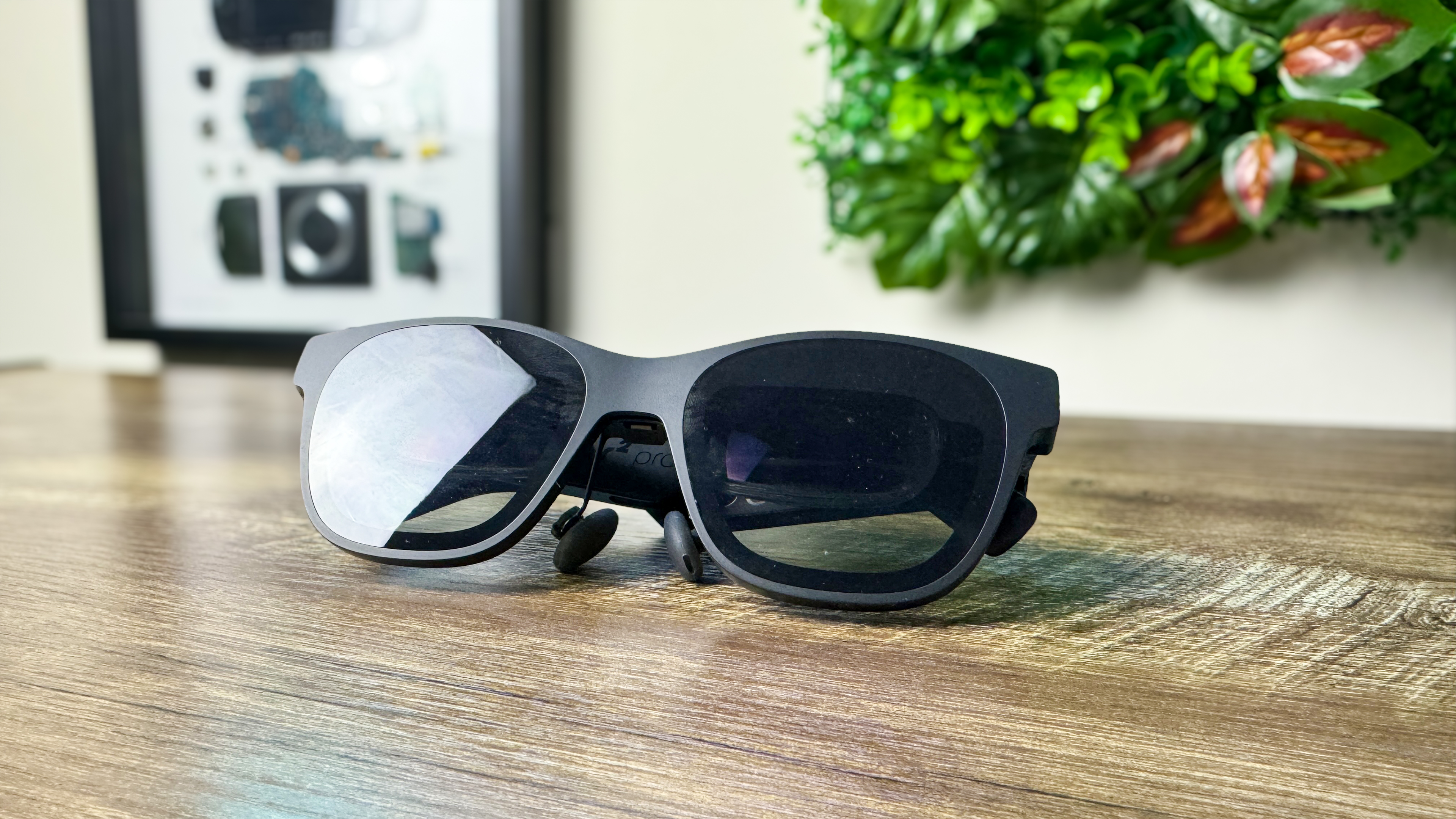
Taking a Wayfarer-esque approach to the aesthetics (much like a lot of its competition), the overall build quality inspires confidence as you take them out of the durable travel case and don them on your face.
The tops of your ears are graced by the premium plastic surface that feels great to the touch, and thanks to air cushioned nose pads (three sizes available in the box), that impressively lightweight 2.6-ounce construction feels even lighter on the face — prompting continued comfort over many hours-long stints of work and play.

However, let’s address the elephant in the room, though. AR glasses are consistently getting more comfortable to wear, as companies figure out what people like on their faces. But the ultimate end goal is to get people wearing these in their day-to-day life. You can see the early makings of this in the additional Beam accessory — a little portable battery-shaped pill that unlocks a lot of the AR capabilities (more on that later).
One key obstacle that’s been in the way, though, has been the size of these devices on the face, which can make them look more like a pair of spy glasses you’d pick up at the Scholastic book fair. The proportions are just too large, which prompts bemused second glances from passers by (I provided entertainment to the people of Nottingham for this test).
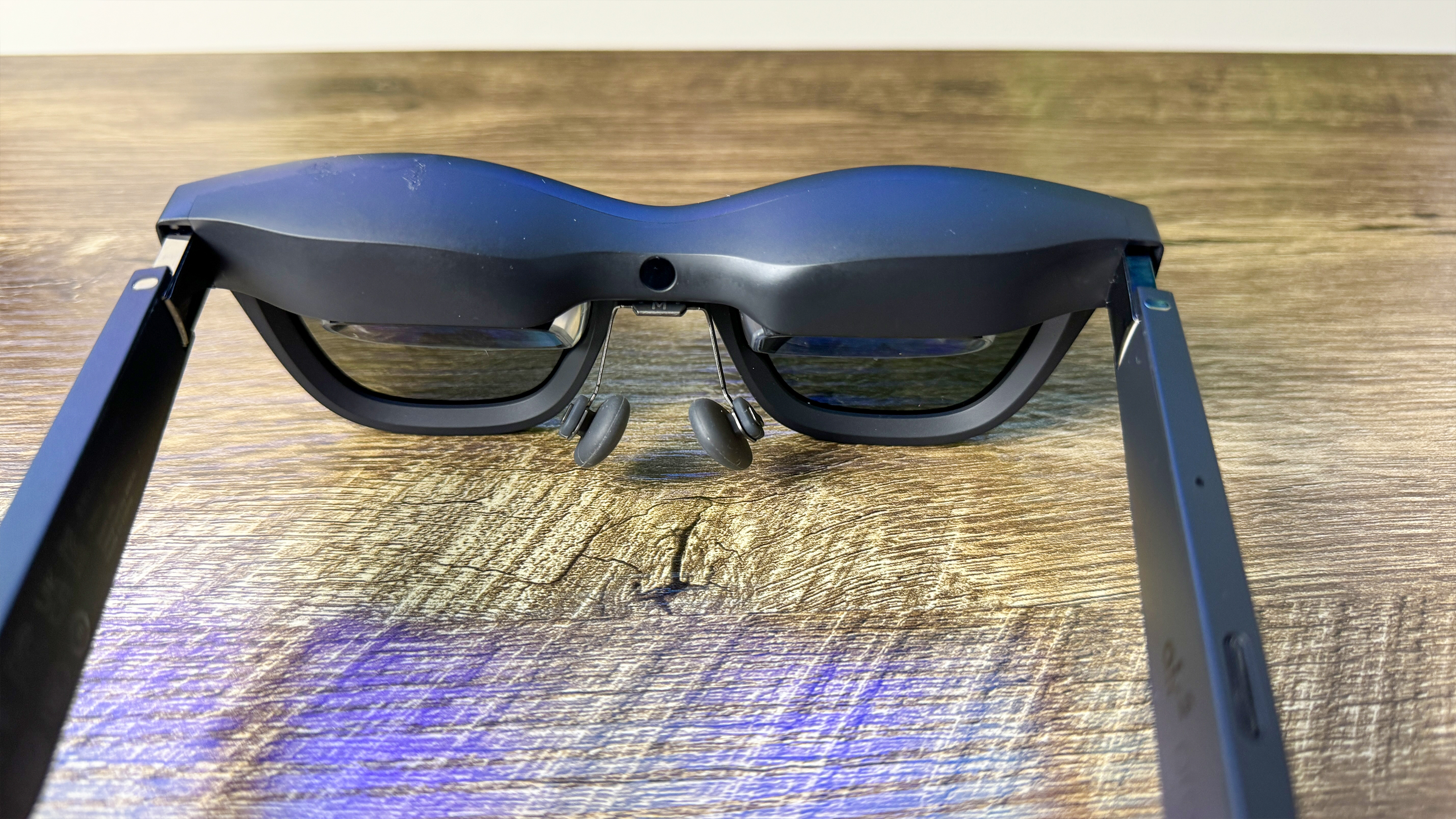
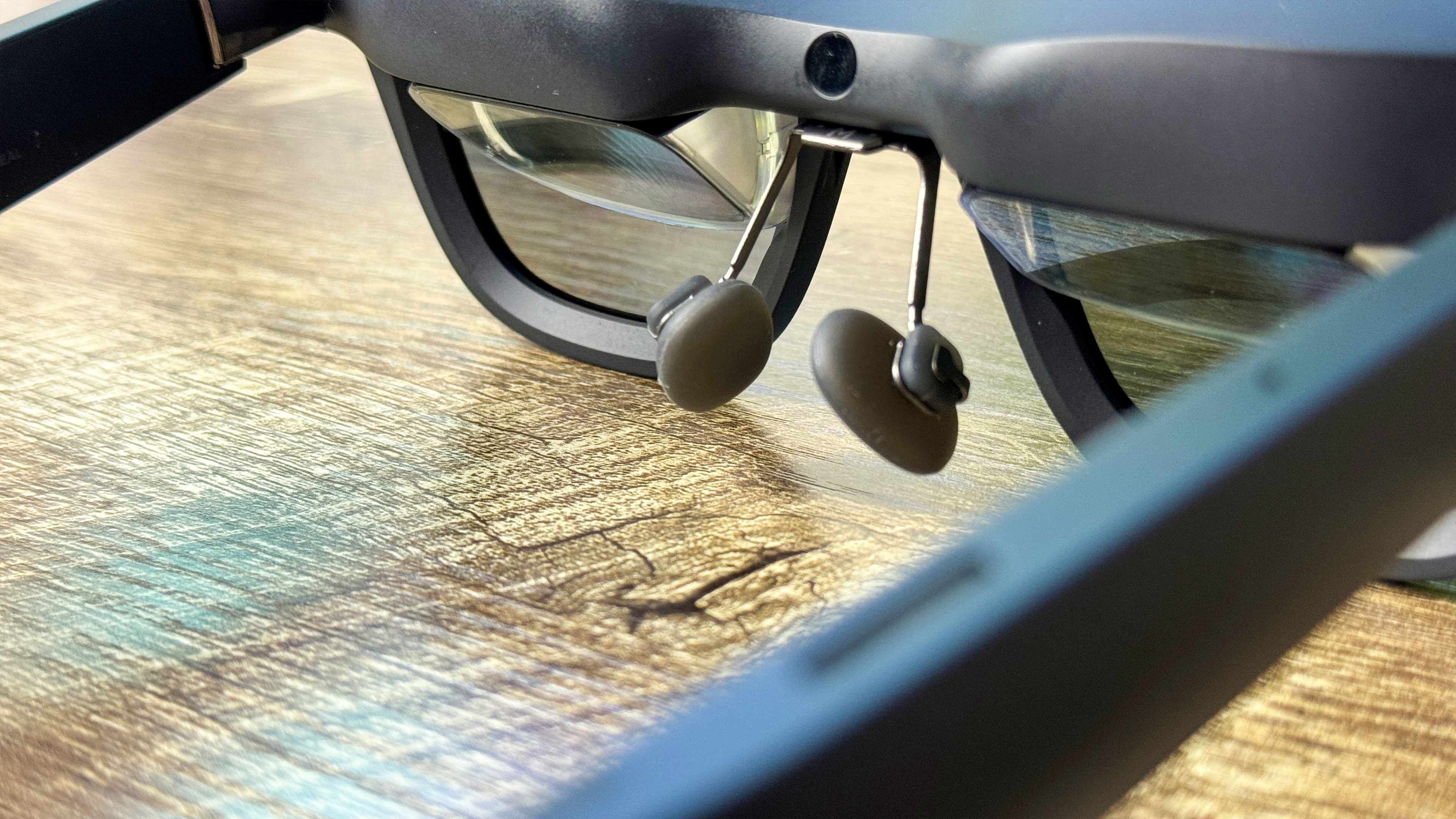
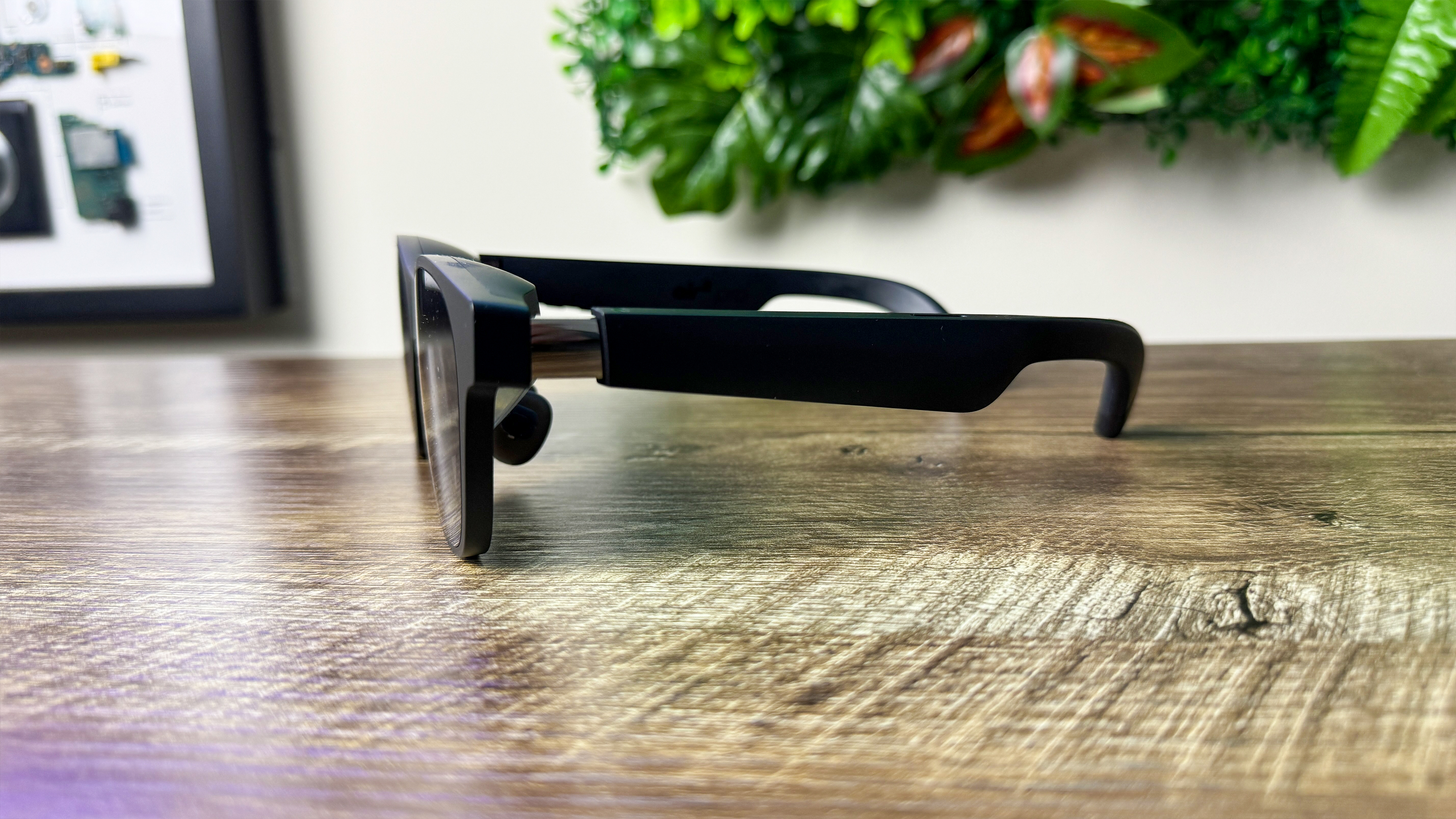
Do the Air 2’s reduced size overcome this issue? Not entirely. They still look too big on your face, but the reduced dimensions do go some way to reduce those double takes from fellow passengers on a long haul flight.
So, we’re getting somewhere with these becoming indistinguishable from a standard pair of specs. That dream is still a few years off from being realized, just like the full Minority Report-esque AR capabilities are, but these show the industry is heading in the right direction.
Xreal Air 2: Setup
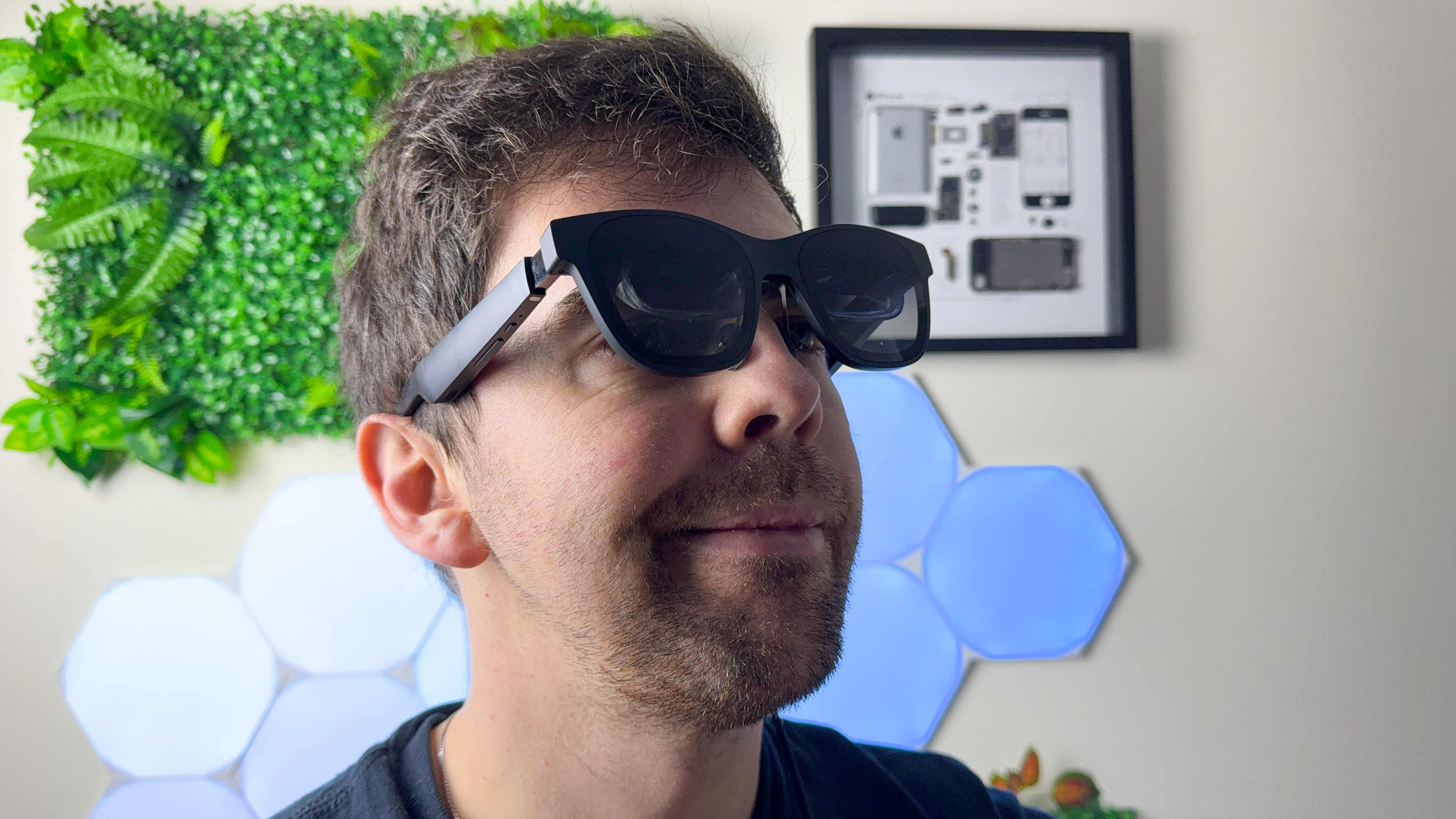
For the basics, these operate just like any other pair of AR glasses. Replicating the display you see on your laptop or portable gaming system, such as the Nintendo Switch or Steam Deck, is as easy as plug-and-play. Connect the USB-C cable and you’re good to go.
To get the best picture quality, you have a prescription lens frame, and if your nose is more comparable in stature to Gary Linekar’s big ol’ sniffer, there are larger-sized nose pads. The way attachments slot in and out gives you a confidence you won’t break these glasses over snapping them in place.
On top of that, a small but significant update to the design is the ability to angle the stalks of the glasses. I’ve used a few AR glasses where the display prisms are positioned in a way I have to constantly look slightly upwards. Now though, I can angle it further down to eliminate eye muscle strain.
Xreal Air 2: Display
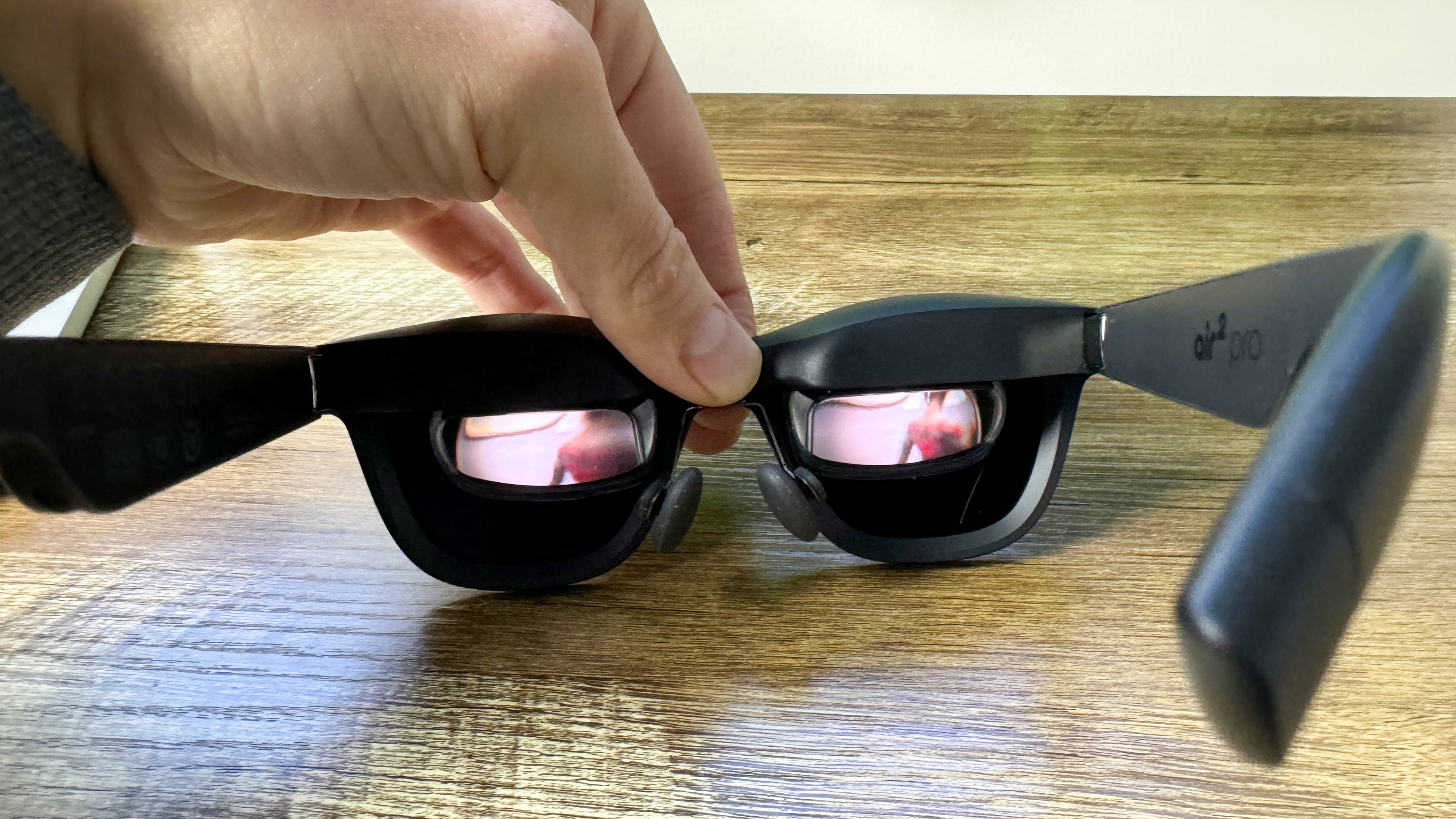
One place where Xreal has seriously upped its game with the Air 2 glasses is in its display technology. Put simply, these are a vivid, sharp, buttery smooth marvel to look at. Using the latest Sony Micro-OLED panels, with a 1080p picture per eye and 46-degree field of view, these specs are capable of creating a 130-inch picture at a four-meter distance in front of you. Oh, and they support up to a 120Hz refresh rate too, and that smoothness cannot be overstated in its importance with display tech so close to your eyes.
But we’ve heard a lot of these similar specs before — especially that display size. So why am I far more favorable of these? Put simply, it comes down to color and eye comfort. Xreal has put a lot of time into calibrating the colors shown through its glasses to ensure professional-grade accuracy, which is something I had a lot of confidence in while editing video, and this even got the company TUV Color Accuracy certification.
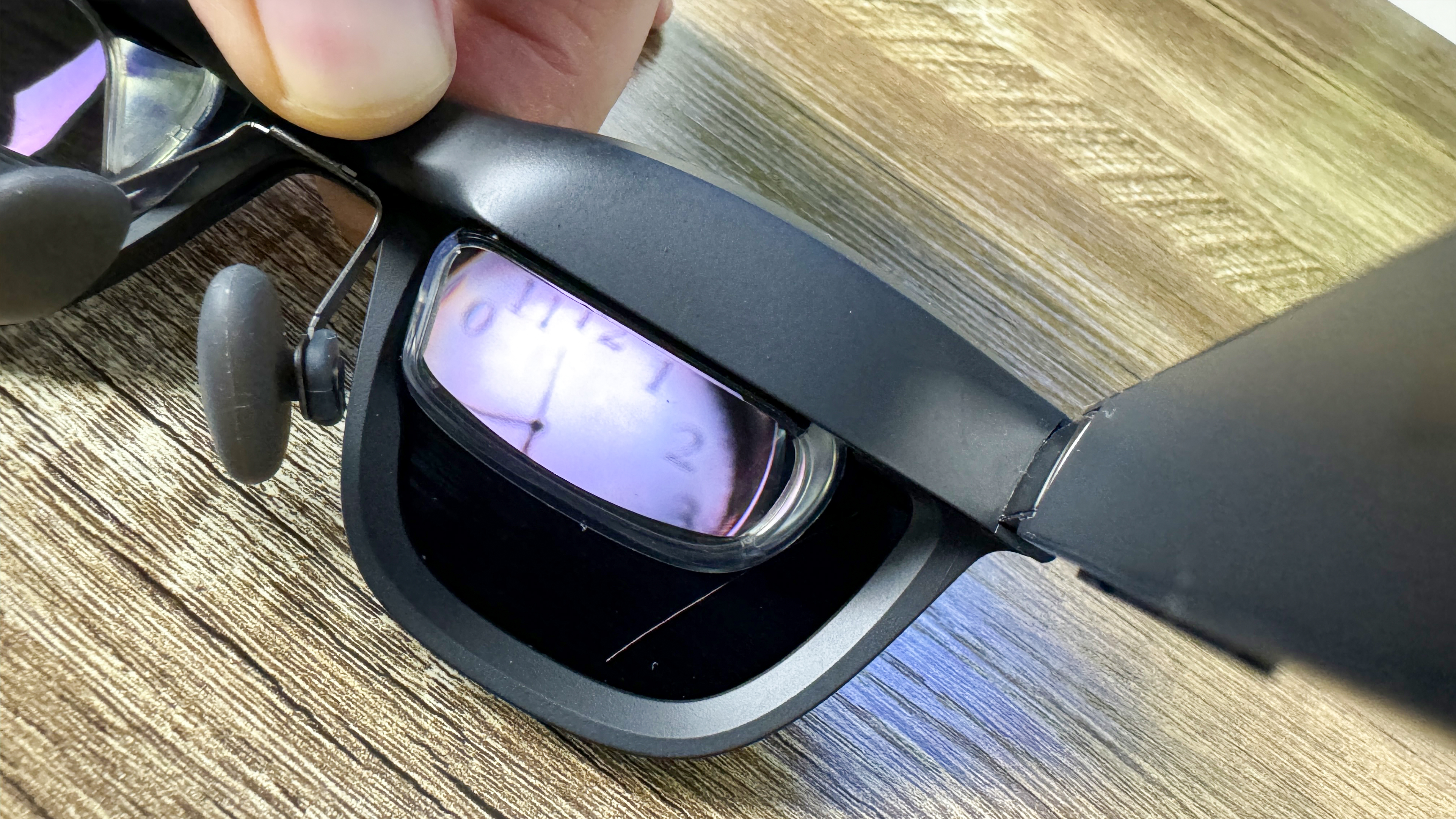
As for the latter, the TUV love-in continues, as the Air 2s also received eye care certification too, thanks to minimal blue light and a flicker-free picture. So, whether you’re cracking on with a bunch of Photoshop work by day or smashing Persona 5 Royal on your Steam Deck by night, visual fatigue is reduced so that you can enjoy a gorgeous picture for even longer durations on your flight.
Plus, the electrochromic lenses on the Air 2 Pro models specifically are something else. Think of those buttons you press below a window on an airplane that darkens it, and that’s exactly what you’re getting here. In all honesty, I’m surprised XREAL has bothered to package a light shield with them. Being able to push a button to customize the transparency of these lenses to properly opaque is mightily impressive.
Xreal Air 2: Sound
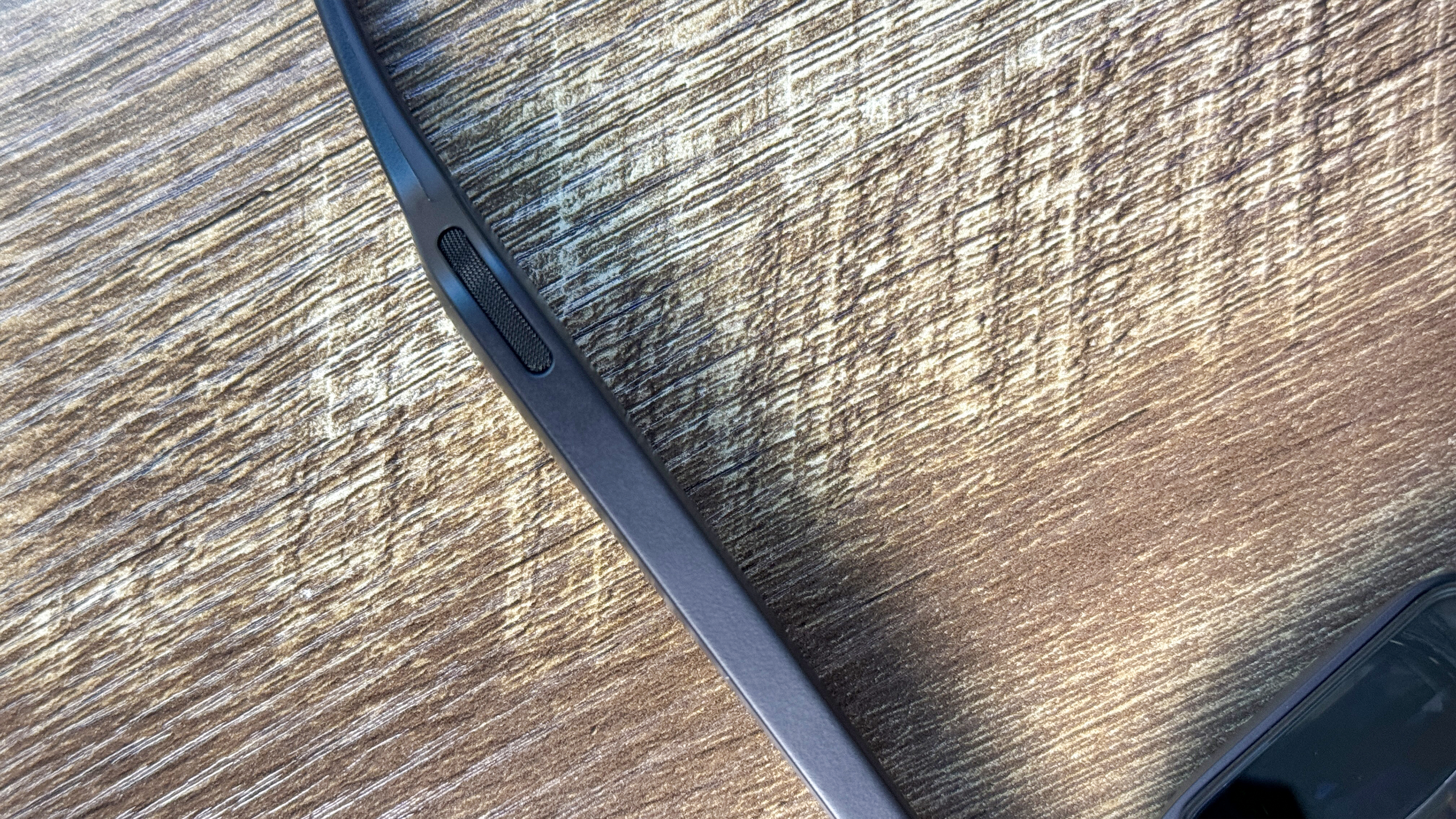
Xreal has also paid plenty of attention to upgrading the speakers built into the stalks too. While the directional open ear audio is always going to sound a little tinny (due to the tiny tweeters in here), they are able to provide a satisfyingly balanced sound across highs and mids, along with a nice hint of bassy warmth.
Firing up “Let’s Go on the Run” by Chance The Rapper highlights the lack of bass in the absence of those subtle 808 stings, but Chance's voice soars above a nice mix of instrumentation that doesn’t distort even at high volumes.
That goes doubly so for gaming. Every gear change in Forza Horizon 5 comes with a fulfilling clunk, while the drum and bass of Hospital radio in the background remains well balanced in the background — all with zero latency between audio and video
Of course, this soundscape is easy to ruin with background noises. To work around that, a good pair of true wireless earbuds will do the trick. But bone conduction audio needs to be in the future of AR glasses to make these an ideal all-in-one solution.
Xreal Air 2: AR features
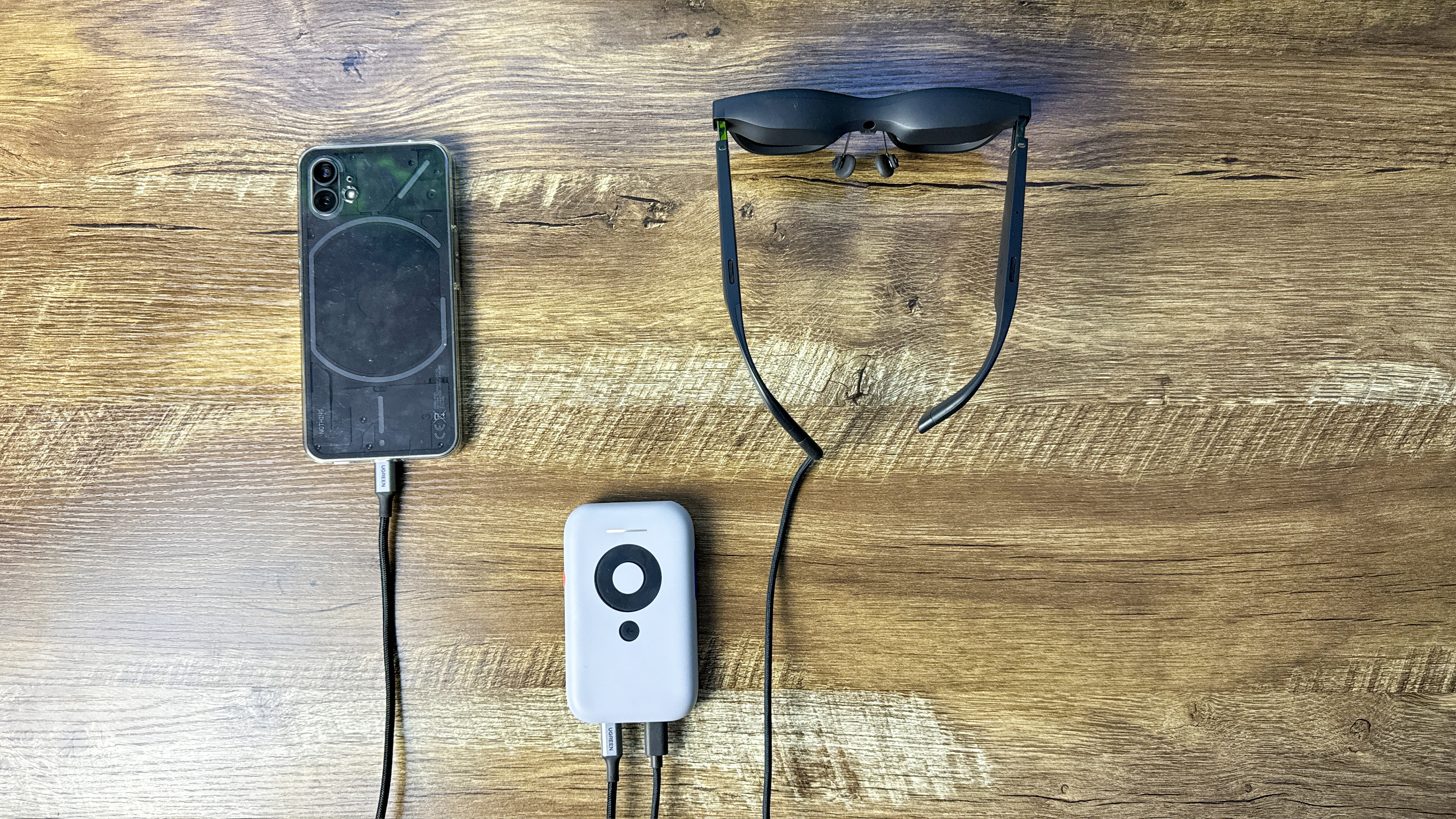
If you use just the glasses, you’re only getting a fraction of what the Air 2 Pros are capable of. The starting point is to download the Nebula software for Android or Mac (the latter is in beta, and a Windows version is coming soon).
What this can do is unlock a full 3-display workspace from your computer — I’m currently typing this on the right hand screen while sat on my train back home from London. While there are some hardware-based limitations, such as the viewing angle meaning the adjacent display cuts off quickly when you start to look away, it’s been immensely helpful to get some multi-screen productivity on the go without needing to buy a portable monitor.
However, that’s not all. To unlock their full potential, you’ll need to buy the $119 Beam device that looks like a small portable battery.
With this device, you can unlock three different viewing modes:
- Sideview: shrink the display to one of the four corners in your view — great if you have something on in the background.
- Smooth Follow: if you have used a pair of AR glasses during turbulent flights, you’ll know how frustrating a bumpy picture can be. Smooth Follow reduces the movement of the picture when jostling around, which makes for a (as the name suggests) smoother picture that preserves detail better to the eye.
- Body Anchor: rather than have a picture that follows your eyes around, you can fix a display in the air so it feels like watching a real-world TV. This has been great for looking away and talking to friends while working.
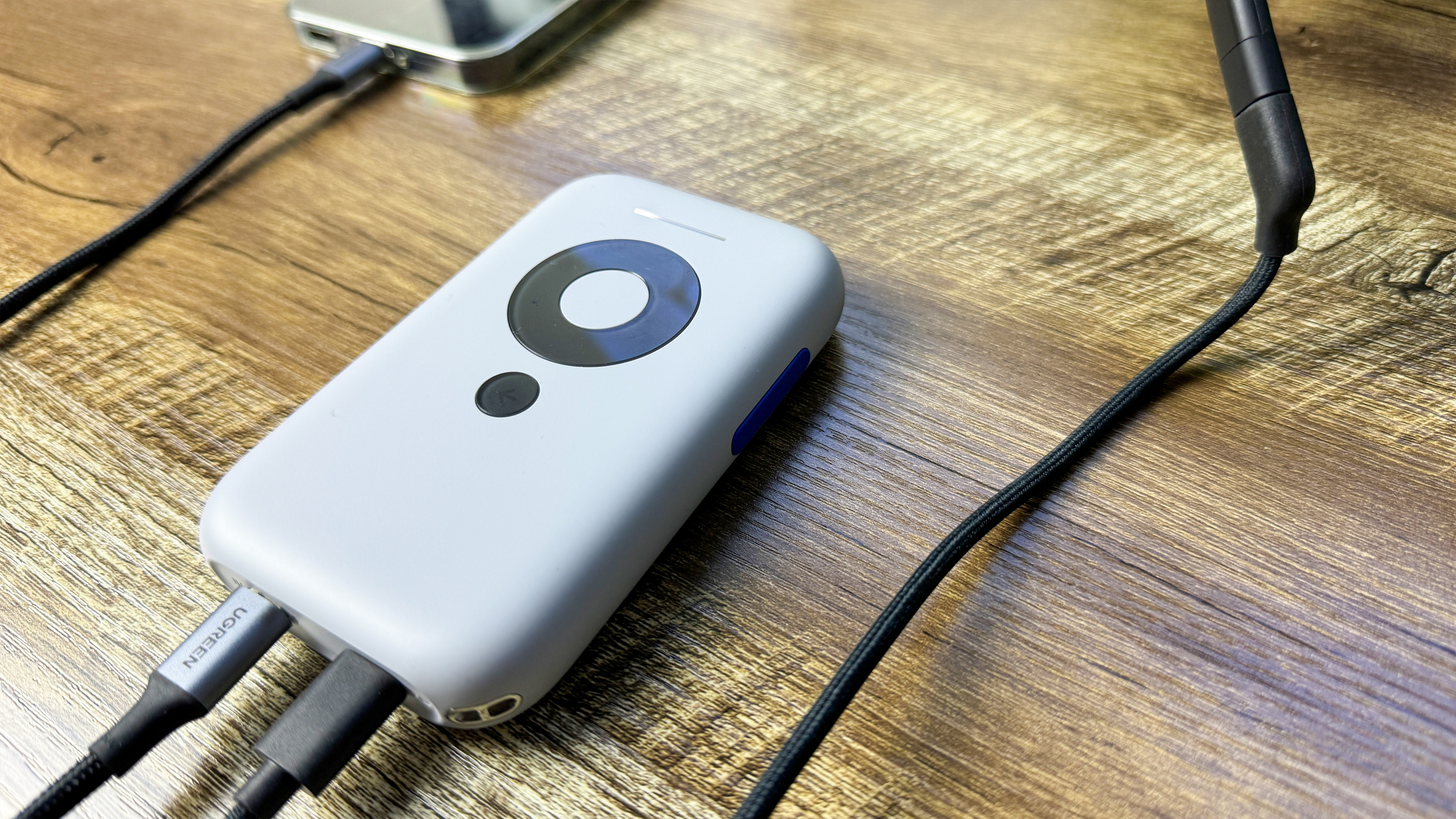
Of course, this doesn’t really help with the portability factor of this device, as you need a second cable and a pocket to stash it. But in moments of long-distance travel, or if you live in a shoebox like I’ve become used to, specs like these can help you really make the most of your space and productivity.
What about longevity? In use, Xreal claims the Beam can give you 3-5 hours of battery life, and I found this to be largely accurate based on what I was doing — getting just over 3 hours when using the multi-display AR environment with my MacBook, and a touch under 5 with a single display pinned to the ceiling.
Xreal Air 2: Verdict
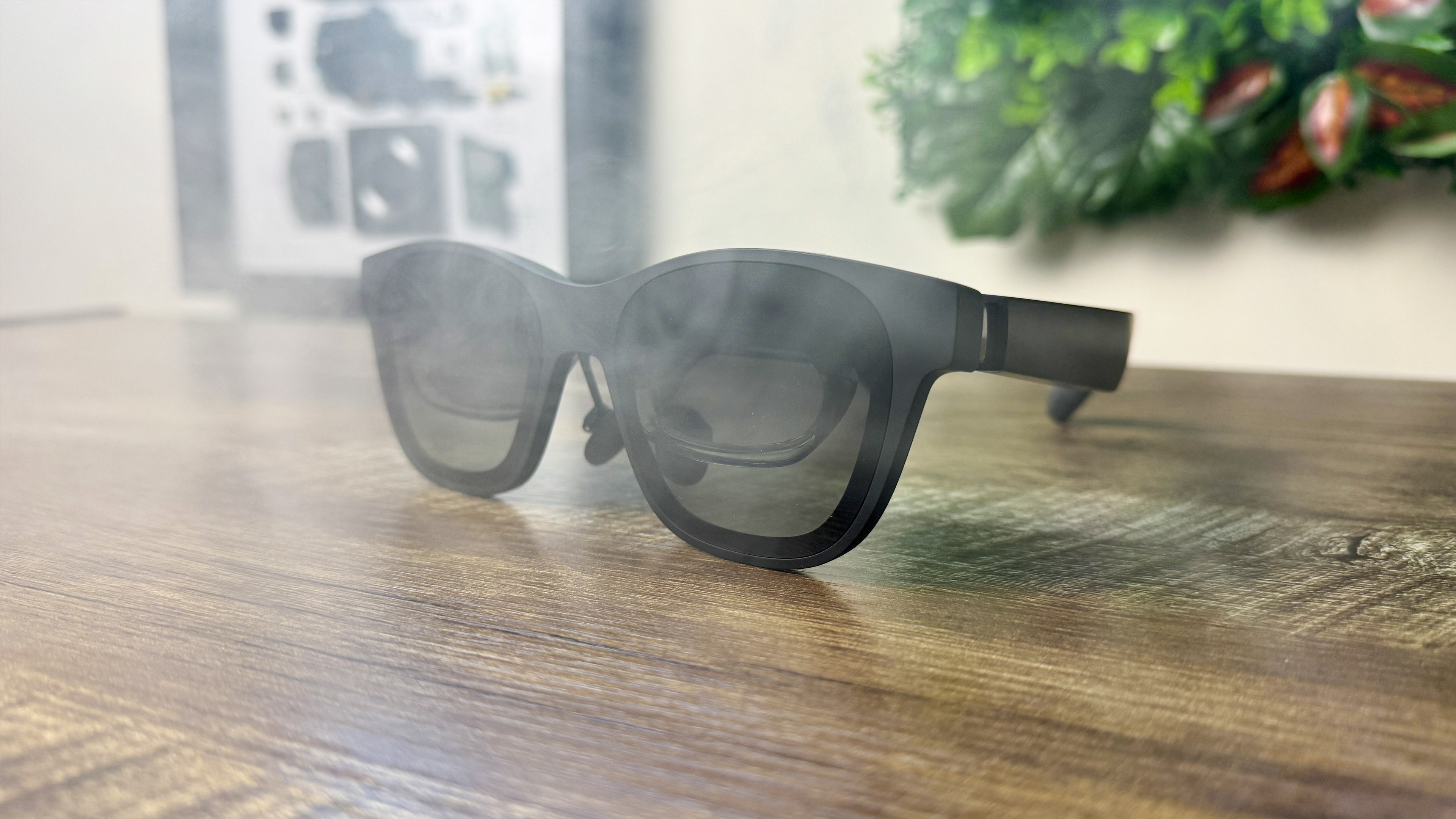
Has Xreal gotten rid of all my AR glass gripes with the Air 2? Almost. These are lighter, thinner, and vastly more comfortable to wear than the competition. They may still look a little large on the face, but nobody will give you a second glance anymore.
Pair these ergonomics with a gorgeously sharp and vividly color accurate picture quality, plug and play ease-of-use, and AR spatial display software that is actually reliable, and you’ve got a well-formed suite for this emerging tech category.
Provided you have enough of a reason to buy a pair (chances are a lot of you don’t right now), the Xreal Air 2 set a new benchmark as AR specs champ.

Jason brings a decade of tech and gaming journalism experience to his role as a Managing Editor of Computing at Tom's Guide. He has previously written for Laptop Mag, Tom's Hardware, Kotaku, Stuff and BBC Science Focus. In his spare time, you'll find Jason looking for good dogs to pet or thinking about eating pizza if he isn't already.

